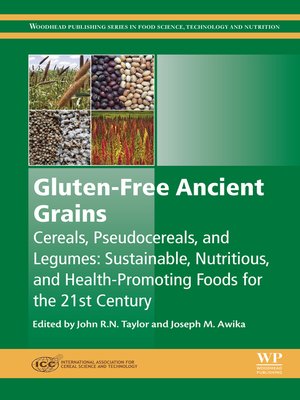Gluten-Free Ancient Grains
ebook ∣ Cereals, Pseudocereals, and Legumes: Sustainable, Nutritious, and Health-Promoting Foods for the 21st Century · Woodhead Publishing Series in Food Science, Technology and Nutrition
By John Taylor

Sign up to save your library
With an OverDrive account, you can save your favorite libraries for at-a-glance information about availability. Find out more about OverDrive accounts.
Find this title in Libby, the library reading app by OverDrive.



Search for a digital library with this title
Title found at these libraries:
| Library Name | Distance |
|---|---|
| Loading... |
Gluten-Free Ancient Grains: Cereals, Pseudocereals and Legumes covers grains that are not related to wheat. This includes sorghum, the major millets - pearl, foxtail, proso and finger millet, as well as teff, the major pseudocereals - quinoa, amaranth and buckwheat, and emerging legume grains - lupin, cowpea, Bambara groundnut and marama beans. These are all characterized as gluten-free grains.
The book provides key information on the sustainable production of these grains. Ancient grains are characterized by their ability to produce a crop under harsh environmental conditions where the major cereals are not-sustainable or even fail. In order to meet growing food demand, and with water resources becoming scarce, this is a highly valuable quality. Chapters review the major grains, analyzing their production and manufacture processes and detailing their impact on long-term good health.
Of interest to many people and organizations in the food production chain, this book will be of significant value to agricultural scientists, food company innovation and R&D managers, academic and food company nutritionists and dietitians and governmental and non-governmental health ministries and research institutes. - Provides a comprehensive overview of non-wheat grains
- Reviews the manufacture and sustainable production of these grains, detailing their abilities to grow in harsh conditions
- Analyzes the nutritional value of ancient grains and their health-promoting qualities







